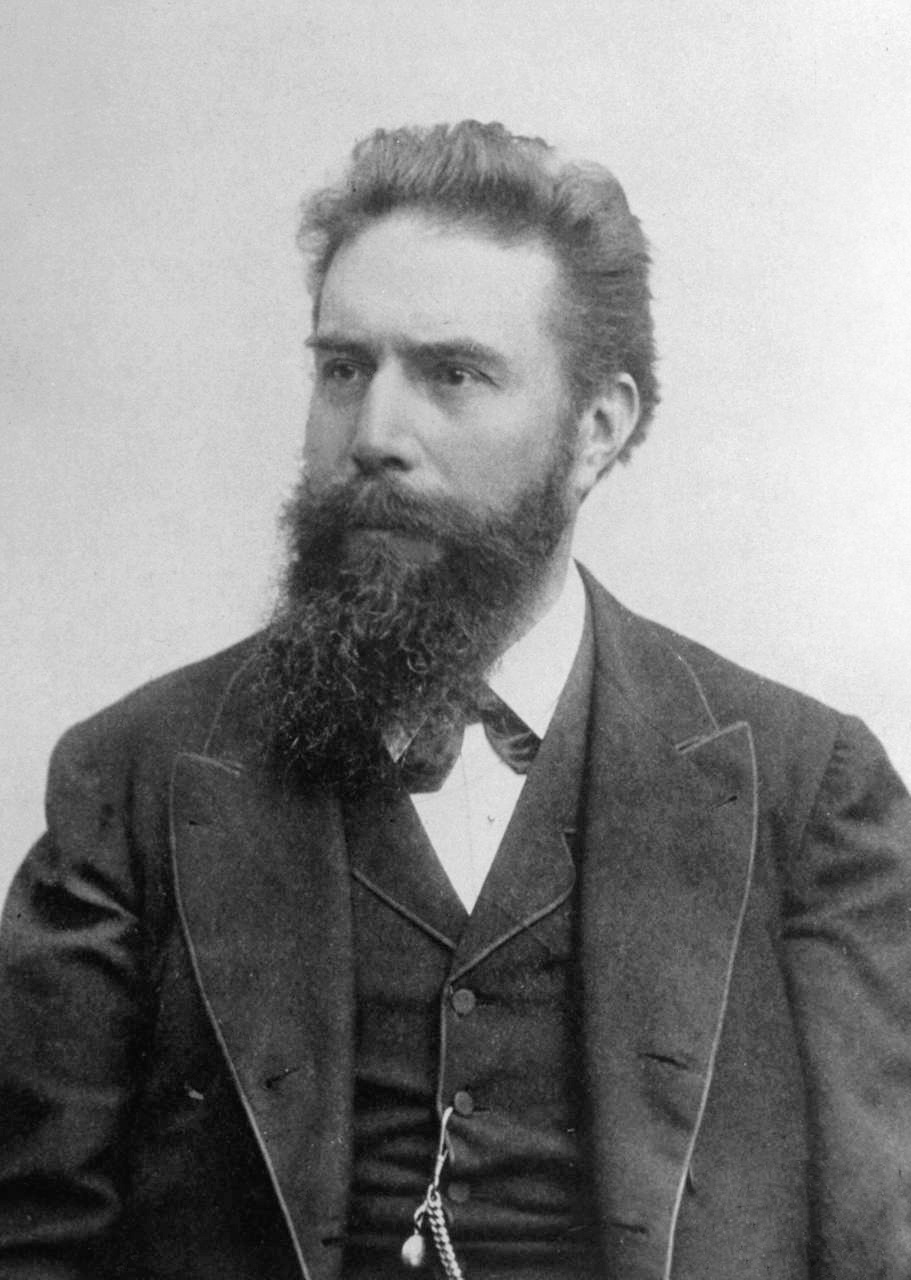Wilhelm Conrad Roentgen: Difference between revisions
(→Career) |
No edit summary |
||
| Line 1: | Line 1: | ||
claimed BY ARIANNA GUASCHHHHHHH DO NOT STEAL | claimed BY ARIANNA GUASCHHHHHHH DO NOT STEAL | ||
[[File:Roentgen2.jpg]] | |||
Wilhelm Conrad Roentgen was a German physicist who won the first Nobel Prize in Physics for his work with electromagnetic radiation, and the invention of the X-Ray. | Wilhelm Conrad Roentgen was a German physicist who won the first Nobel Prize in Physics for his work with electromagnetic radiation, and the invention of the X-Ray. | ||
| Line 18: | Line 18: | ||
===Career=== | ===Career=== | ||
After graduating, he went to the University of Strasburg, and he taught Physics there (1876). He was also a professor of physics at the universities of Strasbourg (1876–1879), Giessen (1879–1888), Würzburg (1888–1900), and Munich (1900–1920). He began his research with electrical charge and the effects and response of these in vacuum tubes. | After graduating, he went to the University of Strasburg, and he taught Physics there (1876). He was also a professor of physics at the universities of Strasbourg (1876–1879), Giessen (1879–1888), Würzburg (1888–1900), and Munich (1900–1920). He began his research with electrical charge and the effects and response of these in vacuum tubes. | ||
==His Work== | ==His Work== | ||
Revision as of 23:32, 5 December 2015
claimed BY ARIANNA GUASCHHHHHHH DO NOT STEAL
 Wilhelm Conrad Roentgen was a German physicist who won the first Nobel Prize in Physics for his work with electromagnetic radiation, and the invention of the X-Ray.
Wilhelm Conrad Roentgen was a German physicist who won the first Nobel Prize in Physics for his work with electromagnetic radiation, and the invention of the X-Ray.
Biography
A short description of important events in Roentgen's Life.
Early Life
Wilhelm Conrad Roentgen was born on March 27, 1845 in Lennep, Prussia, which is now Remscheid, Germany. He was born into a merchant family, Friedrich Conrad Roentgen and his wife Charlotte Constanze Frowein. He grew up in Apeldoorm, and this is where he received his early education. His secondary eduaction he received at a private boarding school called Institute of Martinus Herman van Doorn in Apeldoorm.
Education
His earlier education was in Apeldoorm, but his later education was in Ambachtsschool; a technical school in Utrecht( 1862). Later, he was admitted to the Federal Polytechnic Institute in Zurich. There, he began his studies by majoring in mechanical engineering. He graduated in 1869, with a Ph.D. , and there he met two important and influential teachers one being August Kundt.
Career
After graduating, he went to the University of Strasburg, and he taught Physics there (1876). He was also a professor of physics at the universities of Strasbourg (1876–1879), Giessen (1879–1888), Würzburg (1888–1900), and Munich (1900–1920). He began his research with electrical charge and the effects and response of these in vacuum tubes.
His Work
Be sure to show all steps in your solution and include diagrams whenever possible
Contributions
Accomplishments
The X-ray
- How is this topic connected to something that you are interested in?
- How is it connected to your major?
- Is there an interesting industrial application?
See also
Are there related topics or categories in this wiki resource for the curious reader to explore? How does this topic fit into that context?
Further reading
Books, Articles or other print media on this topic
External links
Internet resources on this topic
References
This section contains the the references you used while writing this page